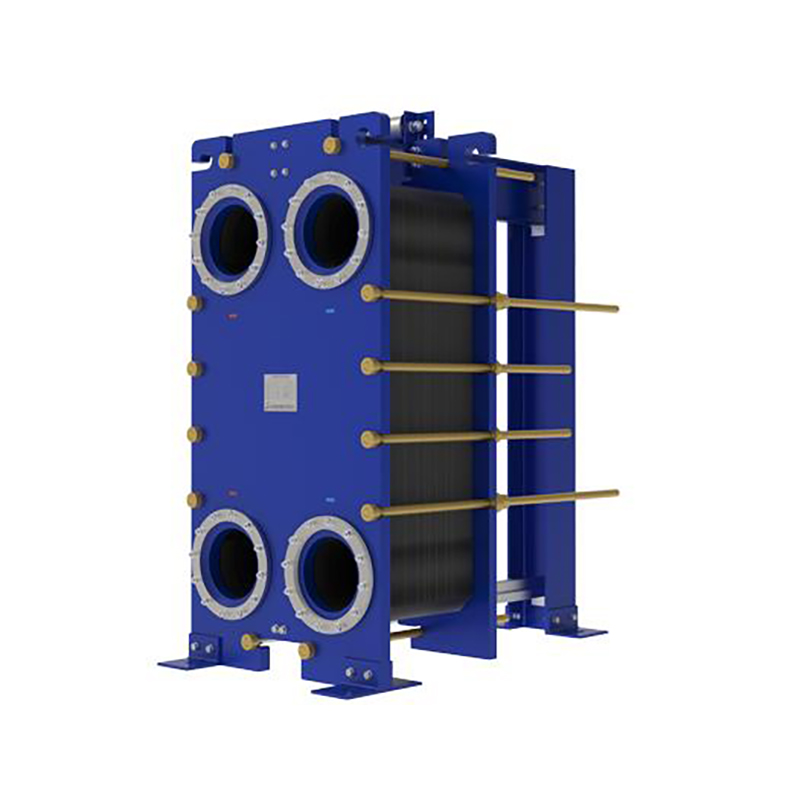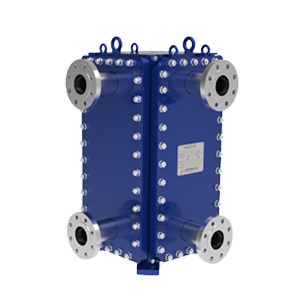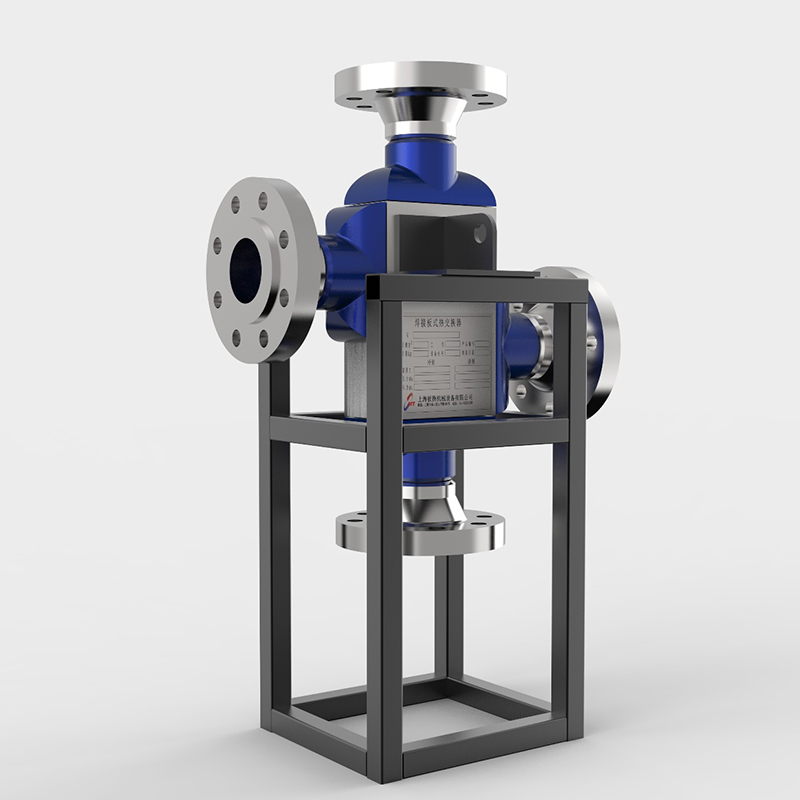5 key roles of plate heat exchanger gaskets.
Plate heat exchanger gaskets perform 5 key roles: ...
More
Compact heat exchangers are advanced thermal management devices designed to maximize heat transfer efficiency within a minimal footprint. Their core principle revolves around achieving a high heat transfer surface area to volume ratio, typically through innovative plate-fin, tube-fin, or printed circuit board (PCB) designs. This engineering approach facilitates rapid and effective heat exchange between two or more fluids—be it gas-to-gas, liquid-to-gas, or liquid-to-liquid—while maintaining a significantly smaller and lighter physical structure than traditional shell-and-tube units. The operational principle hinges on creating highly turbulent flow within the meticulously engineered micro-channels, which drastically reduces thermal resistance and enhances the overall heat transfer coefficient. This fundamental design philosophy allows these exchangers to handle high pressures and temperatures, making them indispensable in applications where space, weight, and performance are critical constraints. By leveraging these core principles, manufacturers can deliver exceptional thermal performance that meets the rigorous demands of today's most advanced technological sectors.
The principle of the compact heat exchanger is fundamentally grounded in maximizing the heat transfer surface area density, a metric often exceeding 700 m²/m³ for plate-fin designs, compared to a mere 100 m²/m³ for conventional shell-and-tube exchangers. This is achieved through intricate internal geometries, such as offset strip fins, wavy fins, or louvered fins, which are aggressively sized and packed into a confined core. These features are not arbitrary; they are precision-engineered to disrupt the fluid's boundary layer, promoting intense turbulence even at lower flow rates. This turbulence is critical as it enhances the convective heat transfer coefficient, a key factor in the overall heat transfer equation Q = U*A*ΔTlm. For instance, in aerospace applications, compact heat exchangers can achieve effectiveness values—a ratio of actual heat transfer to maximum possible heat transfer—surpassing 90% while operating with temperature approaches as tight as 3°C. The materials used, from aluminum alloys to stainless steels and nickel superalloys, are selected for their thermal conductivity, strength, and corrosion resistance, ensuring integrity under cyclic thermal and mechanical stresses. Computational Fluid Dynamics (CFD) and advanced manufacturing techniques like diffusion bonding are employed to optimize these complex flow paths and ensure structural reliability, enabling these units to operate reliably in systems from cryogenic liquefaction to exhaust gas recirculation.
The decision to use a compact heat exchanger is driven by an uncompromising demand for superior efficiency, radical space and weight savings, and enhanced process economics across a multitude of industries. In sectors like aerospace and automotive, where every kilogram and cubic centimeter directly impacts fuel consumption and performance, the weight and volume reduction of up to 85% compared to traditional exchangers is a decisive advantage. For example, in commercial aircraft, compact units are integral to environmental control systems and engine oil cooling, directly contributing to reduced drag and improved fuel efficiency. Beyond weight, their exceptional thermal performance leads to substantial energy savings; in industrial gas processing and HVAC&R systems, their high effectiveness translates into lower energy requirements for achieving the same cooling or heating duty, directly reducing operational costs and greenhouse gas emissions. Furthermore, their robust construction allows for operation at higher pressures, often exceeding 300 bar in applications like supercritical CO2 power cycles, unlocking new levels of cycle efficiency. Their modularity and scalability also offer design flexibility, enabling engineers to tailor solutions for everything from massive chemical processing plants to compact fuel cell systems and data center cooling racks, ensuring optimal temperature control and system reliability.
The rationale for deploying compact heat exchangers is substantiated by overwhelming operational and economic data. In the energy sector, adopting printed circuit heat exchangers (PCHEs) in supercritical CO2 Brayton cycles has demonstrated the potential to increase cycle thermal efficiency from the traditional ~33% of steam Rankine cycles to over 50%, a transformative leap for power generation. A study by the U.S. Department of Energy highlighted that such advanced heat exchangers could reduce the footprint of a heat recovery system by nearly 70%. In the electric vehicle (EV) market, the transition to compact plate-and-shell designs for battery thermal management is critical for enabling fast charging, as they can remove heat loads exceeding 20 kW while maintaining battery temperatures within a safe 2°C window, directly extending battery life and vehicle range. From a financial perspective, while the initial capital outlay might be higher, the Total Cost of Ownership (TCO) is significantly lower. This is due to reduced material costs, lower installation space requirements, and persistent energy savings over the system's lifespan, which can lead to a return on investment (ROI) within 2-3 years in continuous-process industries like petrochemicals and pharmaceuticals, making them an indispensable asset for sustainable and profitable operations.
Select the most popular foreign trade service products to meet your diverse needs
Learn more about the dynamics and professional knowledge of the foreign trade industry

Plate heat exchanger gaskets perform 5 key roles: ...
More
A gasket in heat exchanger seals surfaces, blocks ...
MoreAPI 662 defines standards for plate heat exchanger...
More
You can see clear differences between welded block...
More
Ignoring a fouled heat exchanger causes high energ...
More
A heat exchanger's main parts include the heat tra...
MoreSelect the most popular foreign trade service products to meet your diverse needs
Explore more content related to foreign trade services

User Comments
Service Experience Sharing from Real Customers
Michael Chen
HVAC Design EngineerThis compact heat exchanger is a game-changer for our HVAC systems. The thermal efficiency is outstanding, and its small footprint allowed us to save crucial space in the mechanical room without sacrificing performance. Highly recommended for any project with space constraints.
Sarah Johnson
Process EngineerWe integrated this unit into our chemical processing line for heat recovery. The build quality is robust, handling the corrosive environment much better than our previous model. The efficiency gains have already significantly reduced our energy costs. A superb piece of engineering.
David Rodriguez
Maintenance ManagerExtremely impressed with how easy this compact heat exchanger is to access and service. The modular design means downtime for cleaning and maintenance is minimal. It's reliable and performs exactly as advertised. Lost one star only because the initial installation instructions could be clearer.
Emily Watson
R&D LeadWe've been testing this compact heat exchanger for a new prototype in our lab. The performance data is exceptional for its size. It provides precise temperature control and has accelerated our development timeline. An excellent solution for advanced thermal management in R&D applications.